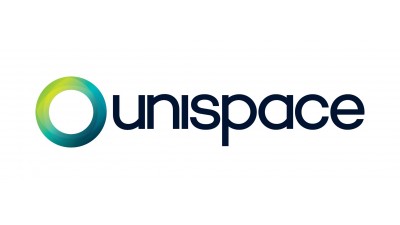Finding The Right Fit: How To Properly Design Your Office

When designing a workspace, most think about a basic aesthetic and logistics, but Unispace tries to think one step beyond, digging deeper and designing around a client’s “organizational and strategic processes.” Global strategy leader Albert De Plazaola (above right) is a Boston College grad with a master’s degree from Georgetown and former positions at Gensler and DEGW, and global design director Brian Tolman (left) has won numerous awards for his work with clients like Bloomberg, IAC and Liquidnet. We sat down with the two to figure out how this deeper design process can be used to create a higher workspace standard.
Picking The Company Brain

The process starts with high-level discussions with leadership. Brian and Albert figure out not only a company’s goals for a new space—such as cutting down on real estate costs or attracting and retaining top talent—but also fundamental cultural principles. A work environment, Brian says, can be vastly different if a company describes itself as “task-driven” as opposed to “focused on innovation and creative thinking.” Learning this esoteric aspect can shed more light than facts and figures. Most (though not all) clients have a fine understanding of their organizational culture and what they’re trying to accomplish, Brian says.
The team will observe how the space is being used. Many times, Brian says, there can be a disconnect between the way people work and the organization’s goal, but that’s perfectly healthy. A disconnect can help Brian and Albert frame a road map to align the goal and reality. With this in mind, the two engage with many of the company’s players, including strategic leadership groups, stakeholders and those resistant to change.
“It’s interesting. You get in those interviews, and often someone’ll say they have to have private offices, and when you ask why, the only reason they have them is because they’ve always had them, or because there’s some hierarchical entitlement issue. And that helps us understand, frame the issue back to the executives and put together models that address all of these issues and concerns,” Brian explains.
At the end of the day, Albert says, they’re trying to uncover and explore a business model and see how to support that model and solve the inherent business challenges through design. This process is vital, as there are countless instances where an office is designed around a trend or to imitate a successful business like Google, only to realize after a considerable investment the model doesn’t work for them. One size doesn’t fit all, and the two work to find the right fit.
Diverging Models

This modeling process is where Albert and Brian diverge in their approaches. While Albert is more tech-oriented—using data capture tools to capture human behavior and model a space—Brian says he’s more iterative, presenting multiple layout options, and engaging in deep discussions of what meshes with company culture and what doesn’t.
Brian says this rift between the two is very common, especially in a project’s early stages, but believes healthy dialogue creates richer results for clients. It’s also long-standing tradition: before the two joined Unispace, they worked on opposite ends of the same project, disagreeing, but still working off each other, to create an impressive workspace.
“It’s interesting,” Albert says, “because we disagree, but we share a common understanding of what the right solution is in terms of a design and perspective."
They continue to debate about the purpose and evolution of workplace design. While Albert agrees with Brian it was typically done by architects who understood the responsibility of the task, he still believes it also has adopted a more scientific approach.
“I don’t think I’m diminishing workspace strategy by saying it’s an approach to programming,” he explains. “What I think has evolved over the years, thanks to Frank Duffy, is that we started to bring in different perspectives into the programming piece—like the social sciences, behavioral sciences, psychology—that, even though it didn’t necessarily change the methodology, it changed the point of view by which we understand the human experience.”
The two are adamant both viewpoints are perfectly valid, and vital to creating a stronger and more unique space and keeping each other from getting too comfortable with one approach.
The Results

Brian and Albert joke they’ve never had someone say the spaces they design are the best they’ve ever had ("I’ll give myself a thousand dollars if that ever happened,” Brian jokes), but the reason they know they’re designing spaces correctly is when they hear people talk about how great it is to be around their colleagues and talk without interference or impediment.
“They don't necessarily understand why that’s now possible,” Albert says, “but we as designers understand, because we've made certain moves to allow that to happen. Once you start hearing them say they’re being more efficient, we know the workspace we designed has removed the impediment. For me, it's not about huge grand gestures of granite, it's about how we support the work practices in a way that's efficient and elegant.”
The Future And The Test

Both are excited to see how they can evolve strategy and design. With Unispace’s collaborative, interdependent environment, Albert's intelligence and Brian’s design ideation are both brought to the table, allowing for better communication to elevate the quality and thoughtfulness of the spaces they produce.
To prove the effectiveness of this design process and thinking, the two have come up with a quick test to try at your own workspace. If all of the branding was covered, would anyone, including your own employees, truly know what your company stood for? Does it intuitively reflect your innovative nature or what you’re seeking to accomplish? If not, they say, you’ve “truly missed the boat.”
To learn more about our Bisnow partner, click here.

